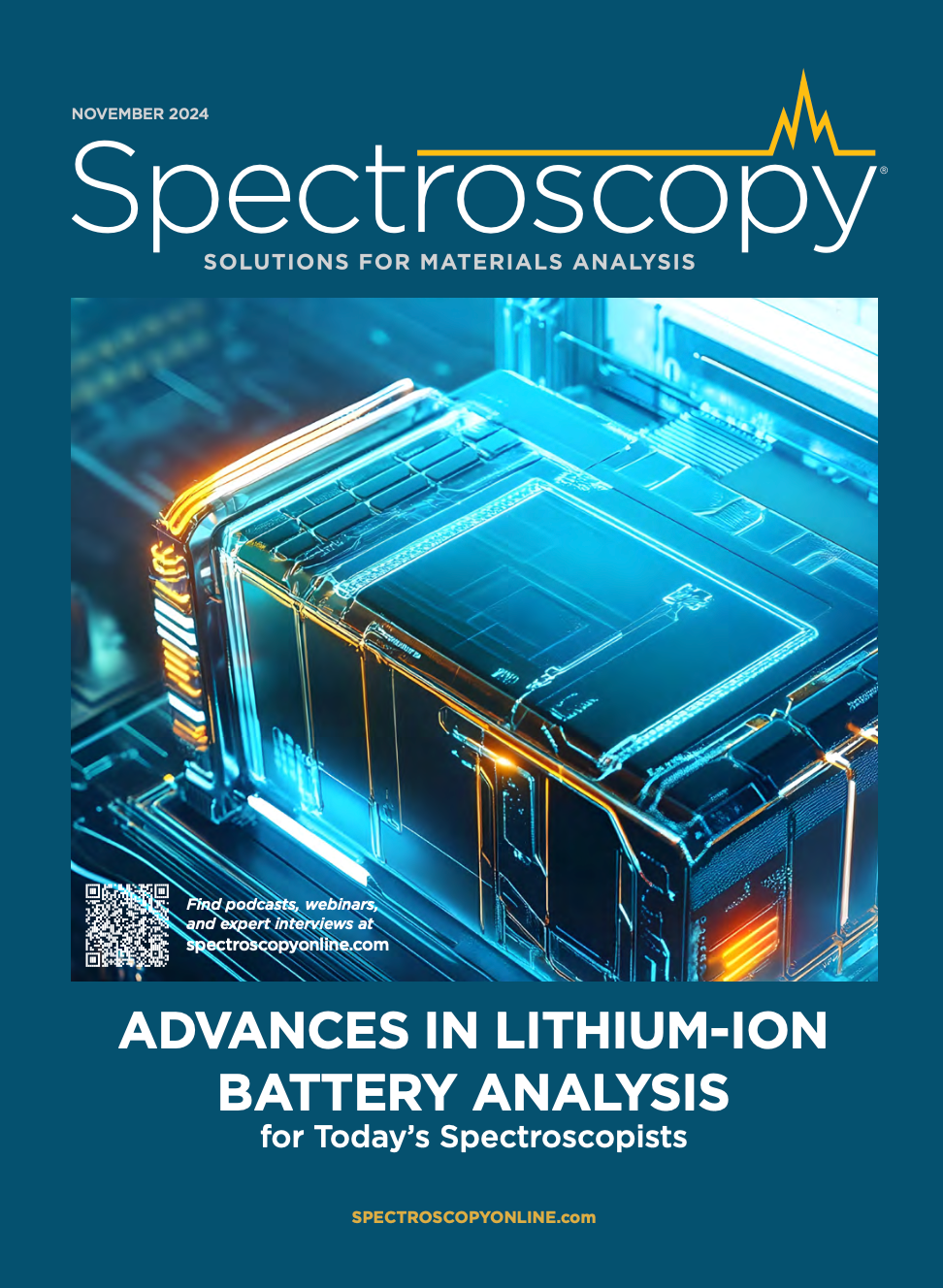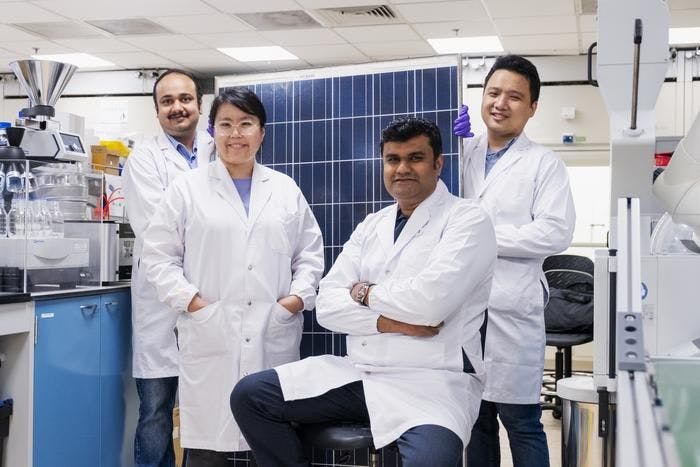The Fundamental Role of Advanced Hyphenated Techniques in Lithium-Ion Battery Research
Spectroscopy spoke with Uwe Karst, a full professor at the University of Münster in the Institute of Inorganic and Analytical Chemistry, to discuss his research on hyphenated analytical techniques in battery research.
What are the challenges associated with analyzing side reactions at electrode surfaces in lithium-ion batteries (LIBs)?
Major challenges are associated with the complexity of the samples in general and a product portfolio at the electrode surfaces that is extremely hard to predict. It should also be noted that, in imaging analysis, there is no chromatographic separation available prior to mass spectroscopy (MS) detection. We address these challenges using high-resolution mass spectrometry (HRMS) based on quadrupole time-of-flight (QTOF) mass analyzers to obtain accurate masses and propose sum formulae of the analytes (1). Additionally, dedicated fragmentation experiments are carried out, and, if available, ion mobility spectrometry (IMS) provides more selectivity by recording collision cross sections.
Why is finding more robust and selective analytical techniques for lithium-ion batteries important?
LIBs are, and will remain, extremely important power sources, and their improvement with respect to capacity, stability, and safety is of high scientific and commercial value. An improved understanding of the processes and side reactions occurring in LIBs is prerequisite for their further optimization and for the development of future LIB generations with previously unmatched performance. In my opinion, imaging techniques as matrix-assisted laser desorption/ionization (MALDI-MS), laser ablation-inductively coupled plasma-mass spectroscopy (LA-ICP-MS), and others, have a great potential as powerful tools for battery research, as local deviations within the LIBs are key to their performance.
What benefits and drawbacks do laser desorption/ionization-mass spectrometry (LDI-MS) offer the analyst when studying the formation of oligomeric reaction products at electrode surfaces?
(MA)LDI-MS is currently using frequency-tripled neodymium-doped yttrium aluminum garnet (Nd:YAG) lasers at wavelengths of 355 nm. This wavelength is only scarcely absorbed by thin tissue slices from biological samples, thus requiring the application of an ultraviolet (UV) light-absorbing matrix. Omitting this matrix by using LDI-MS offers advantages and poses challenges at the same time; although LDI-MS is easier with respect to sample preparation, the application of a matrix provides a broader range of applications, including the analysis of samples with absorbance only in the lower (UV) wavelength range. It should also be considered that the most popular (MA)LDI-MS matrices are based on aromatic carboxylic acids, which are not compatible with many battery constituents because of their acidity.
How can LDI-MS help the analyst avoid the application of a matrix, which is commonly used to assist ionization in biological samples?
Many battery materials exhibit strong absorbance even in the visible range of the spectrum, as indicated by their intense color. Therefore, their absorption bands often cover the laser wavelength of 355 nm as well, allowing to desorb and ionize the analytes, including oligomeric reaction products, even without additional matrices. However, one should not forget that, in cases of MS imaging analysis, local differences in the color of the sample may lead to locally different ionization characteristics. This is an aspect that deserves particular attention when attempting to undergo spatially resolved quantification. Therefore, LDI-MS will, in my opinion, be recognized in the future as a powerful tool for rapid and easy spatially resolved molecular MS analysis that complements existing methods extremely well.
What are the benefits and drawbacks of observing hydrolysis and other side reactions in the electrolyte using an automated platform for ion chromatography (IC) with inductively coupled plasma–optical emission spectroscopy (ICP-OES) or ICP–mass spectrometry (ICP-MS)?
The major challenge in detecting hydrolysis products in LIBs is analyzing individual heteroatom-containing compounds. To address this, elemental speciation analysis based on a chromatographic separation coupled to ICP-MS or ICP-OES can be used. The base of this approach is the compound-independent quantification of the heteroatom after atomization in the plasma. This even allows the analyst to precisely quantify heteroatom-containing analytes that have not been identified yet. For the separation part, IC is the obvious choice because of the ionic nature of most analytes. However, it must be confirmed that the analytes are stable towards hydrolysis in the aqueous mobile phases at the timescale of sample preparation and separation. The choice between ICP-OES and ICP-MS detection mostly depends on the concentration ranges of the analytes. While in bioanalysis, speciation analysis is mostly carried out with ICP-MS because of very low analyte concentrations, the robustness of ICP-OES provides advantages when determining higher concentrations in battery research.
How did this technique aid in the analysis of phosphorus (P), silicon (Si) and boron (B) species?
Because of their higher electronegativity, these elements are more challenging in ICP-OES or ICP-MS compared with platinum metals or lanthanides. However, the combination with IC is favorable because of large injection volumes that lead to improved limits of detection for these elements. Looking at the large studies that are carried out in the research and development of new battery materials, aspects like automated sample preparation, injection, and data evaluation in an integrated instrumental platform should not be underestimated as well. Although speciation analysis has become more widespread in the academic world in recent years, strong potential for its increased use in industry remains because only leading industrial laboratories or specialized laboratories currently are active in this field.
What further opportunities for research exist in this space?
The increasing complexity of analytical challenges in biomedical, environmental, and materials research has been addressed by highly impressive developments of analytical methods and instrumentation in many fields. However, to answer the respective research questions in the future, single analytical methods will not be sufficient. The diversification of analytical chemistry makes it increasingly difficult to combine multiple analytical methods from sample preparation to data interpretation because massive instrumentation and personnel resources would be required. In my opinion, the window is wide open to achieve strong analytical improvements by combining analytical methods and instrumentation in collaborative efforts not only between different research groups, but also between academia and industry.
References
(1) Göldner, V.; Quach, L.; Adhitama, E.; Behrens, A.; Junk, L.; Winter, M.; Placke, T.; Glorius, F.; Karst, U. Laser Desorption/Ionization-Mass Spectrometry for the Analysis of Interphases in Lithium Ion Batteries. iScience 2023, 26 (9), 107517. DOI:10.1016/j.isci.2023.107517.
Uwe Karst holds a permanent position as Full Professor of Analytical Chemistry at the University of Münster (Germany). He finished his studies of Chemistry in Münster with a diploma degree in 1990 and obtained his Dr. rer. nat. in Analytical Chemistry with Professor Karl Cammann in 1993 in the field of immunoassays. After a postdoctorate with Professor Robert E. Sievers at the University of Colorado, (Boulder, Colorado) he started his independent research in Münster and finished his habilitation in 1998. In 2001, he was appointed as Full Professor of Chemical Analysis at the University of Twente (The Netherlands) before he took over his current position in 2005. He published more than 400 papers in peer-reviewed journals and has been chair of several international conferences, including the International Symposium on Chromatography in 2008, the International Symposium on Metallomics in 2011, the European Winter Conference on Plasma Spectrochemistry in 2015 and the International Mass Spectrometry Imaging Conference in 2024, all held in Münster. His major research interests are in the fields of hyphenated analytical techniques, elemental speciation analysis as well as molecular and elemental bioimaging. ●


Describing Their Two-Step Neural Model: An Interview with Ayanjeet Ghosh and Rohit Bhargava
May 20th 2025In the second part of this three-part interview, Ayanjeet Ghosh of the University of Alabama and Rohit Bhargava of the University of Illinois Urbana-Champaign discuss how machine learning (ML) is used in data analysis and go into more detail about the model they developed in their study.
Laser Ablation Molecular Isotopic Spectrometry: A New Dimension of LIBS
July 5th 2012Part of a new podcast series presented in collaboration with the Federation of Analytical Chemistry and Spectroscopy Societies (FACSS), in connection with SciX 2012 — the Great Scientific Exchange, the North American conference (39th Annual) of FACSS.
How Do We Improve Elemental Impurity Analysis in Pharmaceutical Quality Control?
May 16th 2025In this final part of our conversation with Harrington and Seibert, they discuss the main challenges that they encountered in their study and how we can improve elemental impurity analysis in pharmaceutical quality control.

.png&w=3840&q=75)

.png&w=3840&q=75)



.png&w=3840&q=75)



.png&w=3840&q=75)










